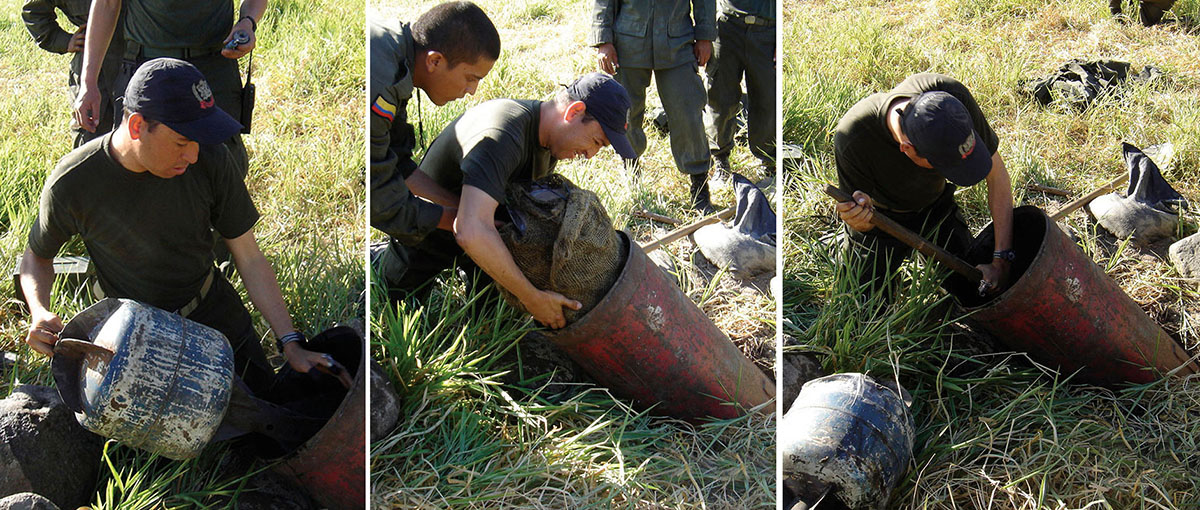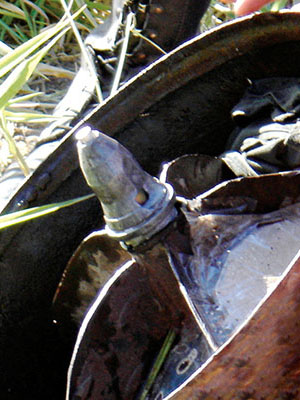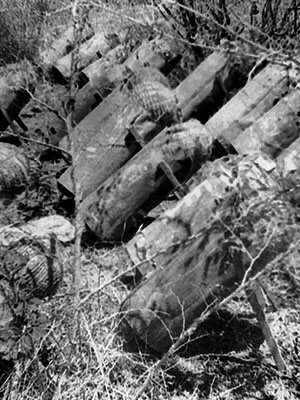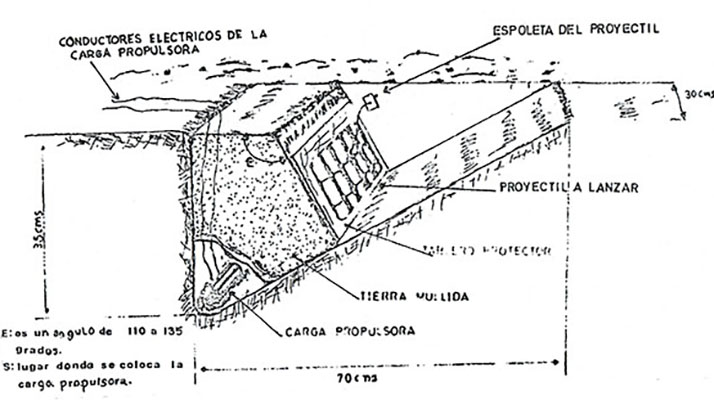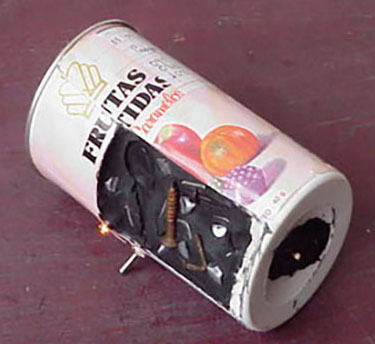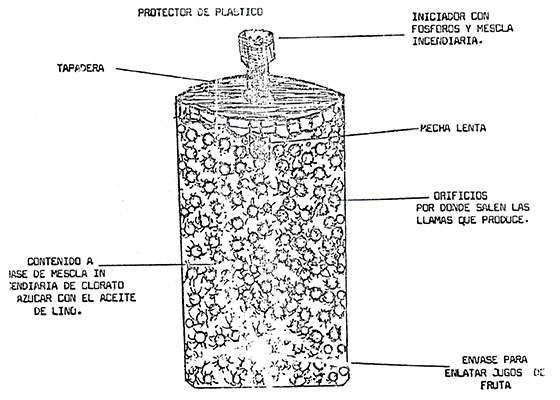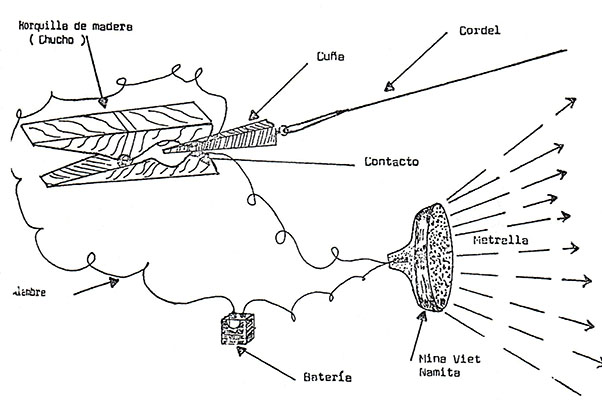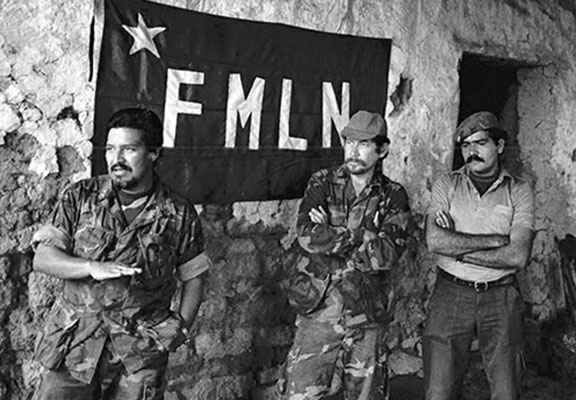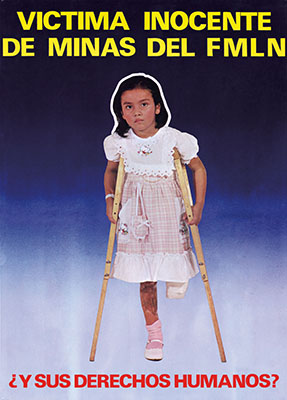NOTE
*Pseudonyms have been used for all military personnel with a rank lower than lieutenant colonel.
DOWNLOAD

In the early morning of 1 November 2006, a hundred FARC-EP (Fuerzas Armadas Revolucionarias de Colombia-Éjercito del Pueblo) guerrillas began their attack against the newly rebuilt police station in Tierradentro, a remote village near the National Archeological Park, Department of Córdoba, 230 miles northwest of Bogotá. A ground assault followed a bombardment of explosive-filled propane gas cylinders—a favored FARC weapon. They are inaccurate and cause considerable collateral damage. In the bloodiest attack since President Alvaro Uribe Vélez was re-elected, sixteen police, one civilian, and three rebels were killed.1
The Colombian chief executive was personally familiar with FARC mortars because fourteen were fired at the presidential palace during his inauguration in August 2002. One ricocheted off an outer wall. None exploded inside the compound where 600 dignitaries were assembled, but twenty-one people were killed when the projectiles landed in an adjacent neighborhood.2
The Veritas 2:1 article, “Los Artefactos Explosivos Improvisados: Spanish for IEDs (Improvised Explosive Devices),” discussed field expedient explosives and mines that were employed by the FMLN (Frente Farabundo Martí para la Liberación Nacional) during the 1982–1993 war in El Salvador. Loss of limb casualties (amputees), military and civilian, from anti-personnel land mines called quita patas (foot removers) and IEDs numbered nearly 10,000 in 1990.3 However, after almost sixty years of internal conflict, Colombia is now the country most affected by land mines and IEDs in the Americas.4 By 2003, Colombia had become the nation with the third largest number of mine victims in the world. Afghanistan and Cambodia rank first and second, respectively. El Salvador is fourth.5


On 24 October 2004, the Colombian armed forces completed their destruction of stockpiled anti-personnel mines in compliance with the international Mine Ban Treaty (MBT). But, in Colombia today, non-state armed groups, most notably the FARC-EP (FARC) and the UC-ELN [Unión Camilista–Ejército de Liberación Nacional (ELN)], continue to employ anti-personnel mines and IEDs on a regular basis. These homemade weapons are second and third generation improved IEDs compared to what was employed in El Salvador. Explosive weights are much greater and the shrapnel infinitely “dirtier.”6
Graphic gross mutilation has a much greater psychological impact than the simple maiming sought by the FMLN. IEDs and land mines accounted for 30 percent of the Colombian Army soldiers killed and 40 percent of the wounded in 2004.7 In the first three months of 2005, one of three Colombian soldiers killed was a mine or IED victim. The year ended with 1,110 IED casualties. The number has grown steadily; from 627 in 2002, to 734 in 2003, to 882 in 2004.8 The problem in Colombia is an overwhelmingly rural one. As of June 2006, 96 percent of the incidents had taken place in the countryside.9
The purpose of this article is to show how the “New Generation” of two specific IEDs favored by the FARC and the ELN are significantly more lethal than those used by the FMLN in El Salvador. While the FARC also employs land mines, the ELN groups are most noted for them. The favorite FARC terror weapon, having contracted explosives training from the Provisional Irish Republican Army (IRA), is the propane gas cylinder mortar (la bomba barbacoa—barbecue bomb).

Allegations of a FARC-IRA connection arose after Interpol confirmed that the three Irishmen arrested in Bogotá on 11 August 2001—James Monaghan, Martin McCauley, and Neil Connolly—were IRA members. Monaghan is credited with designing the IRA homemade mortar. It was originally developed with Libyan help in the early 1970s. The primitive Mark 1 evolved over time into the much more sophisticated Mark 18 “Barracks Buster,” named for its destructive effect on British bases in Northern Ireland. The weapon earned the designer the moniker “Mortar Monaghan.” McCauley and Connolly are reported to be among the best explosive/bomb men in the IRA. Long-range (2,000 meters) propane mortars are mounted in vehicles, called “technicals” by U.S. troops, in the manner of the Somali pickup trucks with crew-served weapon systems.10 Colonel Nelson Francisco Rocha, Director of the Colombian Military Engineer School, confirmed that the “FARC mortars” were amazingly similar to IRA “barracks-busters” and that the FARC was producing electric detonators and using black-powder impulse charges.”11
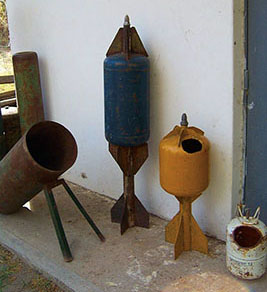
La bomba barbacoa and its launcher are crude, but ingeniously simple. The projectiles are made from common twenty-pound propane gas cylinders. Millions of Colombians use propane gas for cooking and heating, making the supply of tanks plentiful and easily available. The larger hundred-pound tanks serve as the mortar/launcher after their tops have been cut off and a supporting bipod welded on. Crude sheet iron fins are welded to the smaller twenty-pound tank tops to provide some stability in flight (see photos). Through a hole cut in the top or bottom, up to twelve pounds of homemade explosive are poured in and cushioned with sawdust. Sometimes gasoline and glue are added to make them more inflammatory. Tear gas powder is another option. They are time-fuzed with non-electric detonators to land before exploding. A wadded-up burlap sack in the mortar tube (hundred-pound propane tank) separates the propellant black powder from the base of the bomba barbacoa. Electrical detonators fire the propulsion charge and activate the time fuse in the projectile.12

